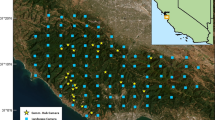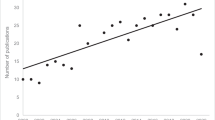Abstract
Nest predation is the most important cause of reproductive failure in ground-nesting passerines and can have significant consequences for populations. To understand how predation affects avian populations, it is important to determine the impact of individual predator species or groups and how their ecology can influence patterns of success. Using motion-activated trail cameras, we investigated the identity of predators appearing at Booted Warbler Iduna caligata and Whinchat Saxicola rubetra nests, and the importance of different predator groups for nest survival in the abandoned fields of “Russky Sever” National Park (European North of Russia). Here, we presented data on 87 Booted Warbler and 122 Whinchat nests monitored with trail cameras from 2016–2020. Nests of Booted Warbler and Whinchat in abandoned fields were depredated by a diverse set of predators comprising at least 12 species belonging to four vertebrate classes. Common Adder Vipera berus was the most important predator identified (30 of 66 depredations). Corvids were the second most important group (12 of 66 depredations), which contradicts established ideas about the important role of corvids in nest predation in agricultural landscapes. All Common Adder predation attempts were recorded at nest with nestlings. The rates of nest predation by Common Adder increased with the age of nestlings and as daily mean temperatures increased. Common Adders could not kill all the nestlings in most of the registered attacks on the nests. Our study shows that the community of species predating nests of ground-nesting passerines can differ between intensively used and abandoned fields.


Similar content being viewed by others
Availability of data and material (data transparency)
Not applicable.
Code availability (software application or custom code)
Not applicable.
References
Andren H (1992) Corvid density and nest predation in relation to forest fragmentation: a landscape perspective. Ecology 73:794–804. https://doi.org/10.2307/1940158
Arbeiter S, Franke E (2018) Predation risk of artificial ground nests in managed floodplain meadows. Acta Oecologica 86:17–22. https://doi.org/10.1016/j.actao.2017.11.012
Barton K (2018) MuMIn: multi-model inference. R package version 1.40.4. https://CRAN.R-project.org/package=MuMIn
Bates D, Machler M, Bolker BM, Walker SC (2015) Fitting linear mixed-effects models using lme4. J Stat Softw 67:1–48
Bellamy PE, Burgess MD, Mallord JW, Cristinacce A, Orsman CJ, Davis T, Grice PV, Charman EC (2017) Nest predation and the influence of habitat structure on nest predation of Wood Warbler Phylloscopus sibilatrix, a ground-nesting forest passerine. J Ornithol 159:493–506. https://doi.org/10.1007/s10336-017-1527-7
Benson TJ, Brown JD, Bednarz JC (2010) Identifying predators clarifies predictors of nest success in a temperate passerine. J Anim Ecol 79:225–234. https://doi.org/10.1111/j.1365-2656.2009.01604.x
Borgmann KL, Conway CJ, Morrison ML (2013) Breeding phenology of birds: mechanisms underlying seasonal declines in the risk of nest predation. PLoS ONE 8:e65909. https://doi.org/10.1371/journal.pone.0065909
Bravo C, Pays O, Sarasa M, Bretagnolle V (2020) Revisiting an old question: which predators eat eggs of ground-nesting birds in farmland landscapes? Sci Total Environ 744:140895. https://doi.org/10.1016/j.scitotenv.2020.140895
Burhans DE, Dearborn D, Thompson FRI, Faaborg J (2002) Factors affecting predation at songbird nests in old fields. J Wildl Manage 66:240–249
Burnham KP, Anderson DR (2002) Model Selection and multimodel inference: a practical information-theoretic approach, 2nd edn. Springer-Verlag, New York, NY, USA
Capstick LA, Madden JR (2021) Factors predicting susceptibility of songbirds to nest predation by corvids. Eur J Wildl Res 67:96. https://doi.org/10.1007/S10344-021-01532-Z
Collar N., Garcia EFJ (2020) Whinchat (Saxicola rubetra), version 1.0. In: del Hoyo J, Elliott A, Sargatal J, Christie DA, de Juana E (ed) Birds of the world. Cornell Lab of Ornithology, Ithaca, NY, USA. https://doi.org/10.2173/bow.whinch1.01
Cox WA, Thompson FR, Reidy JL (2013) The effects of temperature on nest predation by mammals, birds, and snakes. Auk 130:784–790. https://doi.org/10.1525/auk.2013.13033
DeGregorio BA, Chiavacci SJ, Weatherhead PJ et al (2014) Snake predation on North American bird nests: culprits, patterns and future directions. J Avian Biol 45:325–333. https://doi.org/10.1111/jav.00364
Dolman PM (2010) Woodlark and Nightjar recreational disturbance and nest predator study 2008 and 2009. Final Report to Breckland District Council. https://www.breckland.gov.uk/media/1968/Birds-Woodlark-and-Nightjar-Recreation-Distribution-and-Nest-Predator-Study/pdf/UEA_Report_to_Breckland_FINAL_09-2010.pdf
Eichholz MW, Koenig WD (1992) Gopher snake attraction to birds’ nests. Southwest Nat 37:293. https://doi.org/10.2307/3671872
Grant TA, Shaffer TL (2012) Time-specific patterns of nest survival for ducks and passerines breeding in North Dakota. Auk 129:319–328. https://doi.org/10.1525/auk.2012.11064
Grendelmeier A, Arlettaz R, Gerber M, Pasinelli G (2015) Reproductive performance of a declining forest passerine in relation to environmental and social factors: implications for species conservation. PLoS ONE 10:e0130954. https://doi.org/10.1371/journal.pone.0130954
Grudinskaya V, Samsonov S, Galkina E, Grabovsky A, Makarova T, Vaytina T, Fedotova S, Shitikov D (In press) Effects of spring weather on laying dates, clutch size and nest survival of ground-nesting passerines in abandoned fields. Avian Conserv Ecol
Herranz J, Yanes M, Suárez F (2002) Does photo-monitoring affect nest predation? J F Ornithol 73:97–101. https://doi.org/10.1648/0273-8570-73.1.97
Husby M, Hoset KS (2018) Seasonal variation in nest predation rates in boreal forests. J Ornithol 159:975–984. https://doi.org/10.1007/s10336-018-1563-y
Korosov AV (2010) Ecology of Common Adder in the north. Petrozavodsk. [In Russian].
Krüger H, Väänänen V-MM, Holopainen S, Nummi P (2018) The new faces of nest predation in agricultural landscapes—a wildlife camera survey with artificial nests. Eur J Wildl Res 64:76. https://doi.org/10.1007/s10344-018-1233-7
Lyons TP, Miller JR, Debinski DM, Engle DM (2015) Predator identity influences the effect of habitat management on nest predation. Ecol Appl 25:1596–1605. https://doi.org/10.1890/14-1641.1
Mallord JW, Orsman CJ, Cristinacce A et al (2012) Mortality of Wood Warbler Phylloscopus sibilatrix nests in Welsh Oakwoods: predation rates and the identification of nest predators using miniature nest cameras. Bird Study 59:286–295. https://doi.org/10.1080/00063657.2012.669359
Martin TE (1992) Interaction of nest predation and food limitation in reproductive strategies. Current Ornithology. Springer, US, Boston, MA, pp 163–197
Martin TE, Scott J, Menge C (2000) Nest predation increases with parental activity: separating nest site and parental activity effects. Proc R Soc London Ser B Biol Sci 267:2287–2293. https://doi.org/10.1098/rspb.2000.1281
Martin TE, Tobalske B, Riordan MM, et al (2018) Age and performance at fledging are a cause and consequence of juvenile mortality between life stages. Sci Adv 4:eaar1988. https://doi.org/10.1126/sciadv.aar1988
Maziarz M, Grendelmeier A, Wesołowski T, Arlettaz R, Broughton RK, Pasinelli G (2019) Patterns of predator behaviour and Wood Warbler Phylloscopus sibilatrix nest survival in a primaeval forest. Ibis 161:854–866. https://doi.org/10.1111/ibi.12679
Pärt T, Wretenberg J (2002) Do artificial nests reveal relative nest predation risk for real nests? J Avian Biol 33:39–46. https://doi.org/10.1034/j.1600-048X.2002.330107.x
Pietz PJ, Granfors DA (2000) Identifying predators and fates of grassland passerine nests using miniature video cameras. J Wildl Manage 64:71. https://doi.org/10.2307/3802976
Praus L, Hegemann A, Tieleman BI, Weidinger K (2014) Predators and predation rates of Skylark Alauda arvensis and Woodlark Lullula arborea nests in a semi-natural area in the Netherlands. Ardea 102:87–94. https://doi.org/10.5253/078.102.0112
Rauter CM, Reyer HU, Bollmann K (2002) Selection through predation, snowfall and microclimate on nest-site preferences in the water pipit Anthus spinoletta. Ibis 144:433–444. https://doi.org/10.1046/j.1474-919X.2002.00013.x
Richardson TW, Gardali T, Jenkins SH (2009) Review and meta-analysis of camera effects on avian nest success. J Wildl Manage 73:287–293. https://doi.org/10.2193/2007-566
Ricklefs RE (1969) An analysis of nesting mortality in birds. Smithson Contrib to Zool.
Roos S (2002) Functional response, seasonal decline and landscape differences in nest predation risk. Oecologia 133:608–615. https://doi.org/10.1007/s00442-002-1056-8
Samsonov SV, Makarova TV, Shitikov DA (2018) Nest predator species of open nesting songbirds of abandoned fields in «Russky Sever» National Park (Russia). Nat Conserv Res 3:104–107. https://doi.org/10.24189/ncr.2018.025
Shaffer TL (2004) A unified approach to analyzing nest success. Auk 121:526–540. https://doi.org/10.1093/AUK/121.2.526
Shitikov DA, Fedotova SE, Gagieva VA (2012) Nest survival, predators and breeding performance of Booted Warblers Iduna caligata in the abandoned fields of the North of European Russia. Acta Ornithol 47:137–146. https://doi.org/10.3161/000164512X662241
Shitikov D, Grudinskaya V, Makarova T, Vaytina T, Fedotova S, Samsonov S, Grabovsky A (2020) Low first-year apparent survival of passerines in abandoned fields in northwestern Russia. The Condor 122: duaa008. https://doi.org/10.1093/condor/duaa008
Shitikov DA, Vaytina TM, Gagieva VA, Fedchuk DV. (2015) Breeding success affects site fidelity in a Whinchat Saxicola rubetra population in abandoned fields. Bird Study 62:96–105. https://doi.org/10.1080/00063657.2014.988120
Shitikov DA, Vaytina TM, Makarova TV, Fedotova SE, Krasnykh NA, Yurchenko YA (2017) Breeding success affects the apparent survival of grassland passerines. Biol Bull 44:1170–1179. https://doi.org/10.1134/S1062359017090138
Shitikov D, Vaytina T, Makarova T, Fedotova S, Volkova V, Samsonov S (2018) Species-specific nest predation depends on the total passerine nest density in open-nesting passerines. J Ornithol 159:483–491. https://doi.org/10.1007/s10336-017-1526-8
Skagen SK, Yackel Adams AA (2012) Weather effects on avian breeding performance and implications of climate change. Ecol Appl 22:1131–1145. https://doi.org/10.1890/11-0291.1
Sperry JH, Peak RG, Cimprich DA, Weatherhead PJ (2008) Snake activity affects seasonal variation in nest predation risk for birds. J Avian Biol 39:379–383. https://doi.org/10.1111/j.0908-8857.2008.04451.x
Stake MM, Thompson FR, Faaborg J, Burhans DE, Frank RT III (2005) Patterns of Snake Predation at Songbird Nests in Missouri and Texas. J Herpetol 39:215–222. https://doi.org/10.2307/4092896
Svensson S (1983) A common frog, Rana temporaria, consumed a nestling of Willow Warbler. Phylloscopus Trochilus Var Fagelvarld 42:347
The R Core Team (2018). R: A Language and Environment for Statistical Computing. Vienna, Austria: R Foundation for Statistical Computing. https://www.R-project.org/
Thompson FR, Burhans DE (2003) Predation of songbird nests differs by predator and between field and forest habitats. J Wildl Manage 67:9
Thompson FR, Dijak W, Burhans DE (1999) Video identification of predators at songbird nests in old fields. Auk 116:259–264. https://doi.org/10.2307/4089477
Weatherhead PJ, Blouin-Demers G (2004) Understanding avian nest predation: why ornithologists should study snakes. J Avian Biol 35:185–190. https://doi.org/10.1111/j.0908-8857.2004.03336.x
Acnowledgments
This study was funded by Russian Foundation for Basic Research (grant number 16–04-01383 and 19–04-01043). The fieldwork in the “Russky Sever” National Park was made possible through the support of the administration of the Park, particularly A.L. Kuznetsov and L.V. Kuznetsova. The students and graduates of the Department of Zoology and Ecology, Moscow Pedagogical State University, were involved in the fieldwork.
Funding
This study was funded by Russian Foundation for Basic Research (grant number 16–04-01383 and 19–04-01043).
Author information
Authors and Affiliations
Contributions
Not applicable.
Corresponding author
Ethics declarations
Additional declarations for articles in life science journals that report the results of studies involving humans and/or animals
Not applicable.
Ethics approval (include appropriate approvals or waivers)
Not applicable.
Conflicts of interest/Competing interests
The authors declare no conflict of interest.
Additional information
Publisher's Note
Springer Nature remains neutral with regard to jurisdictional claims in published maps and institutional affiliations.
Supplementary information
Below is the link to the electronic supplementary material.
Rights and permissions
About this article
Cite this article
Samsonov, S., Grudinskaya, V., Grabovsky, A. et al. A hidden threat in abandoned fields: frequent nest predation by common adder on ground-nesting passerines. Eur J Wildl Res 68, 11 (2022). https://doi.org/10.1007/s10344-022-01559-w
Received:
Revised:
Accepted:
Published:
DOI: https://doi.org/10.1007/s10344-022-01559-w




